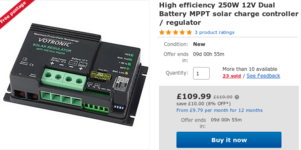wildebus
Full Member
- Messages
- 7,780
Basically, when you connect multiple panels in Series , you add the voltages together, and the amperage is the lowest of any of the panels.How close do the specs have to be? Does it have to be an exact match? Is it the open circuit voltage we need to look at?
If wired in Parallel, you add the amperages, but the voltage is the lowest of any of the panels.
Give you an example from a pair of panels from Photonic Universe ....
80W Panel - Max Voltage = 20.2V; Max Current = 3.96A
100W Panel - Max Voltage = 20.2V; Max Current = 4.95A
If you wired up in Parallel, you would get the full 180W potential, but in Series, the 100W Panel is limited to 80W maximum. In this case the Panels are from the same range so have a common factor and can be configured optimally.
If I used a 100W Renogy Panel instead, that has a Voltage of 17.9V and Current of 5.72A. Add this to the 80W Panel above, you would have:
in Series: Voltage of 38.1V & Current of 3.96A = 151W
in Parallel: Voltage of 17.9V & Current of 9.68A = 173W
Here, you cannot get the full benefit either way of the extra 100W panel, but parallel will give you the best possible result. If you happened to add a 24V panel to an existing 12V panel, you would never wire in parallel as you would instantly halve the 24V Panels output.
End of the day, if you know the spec of the panel fitted, you can try to find the best matched option to add in.
(corrected: had Series and Parallel swapped!)
Last edited:

